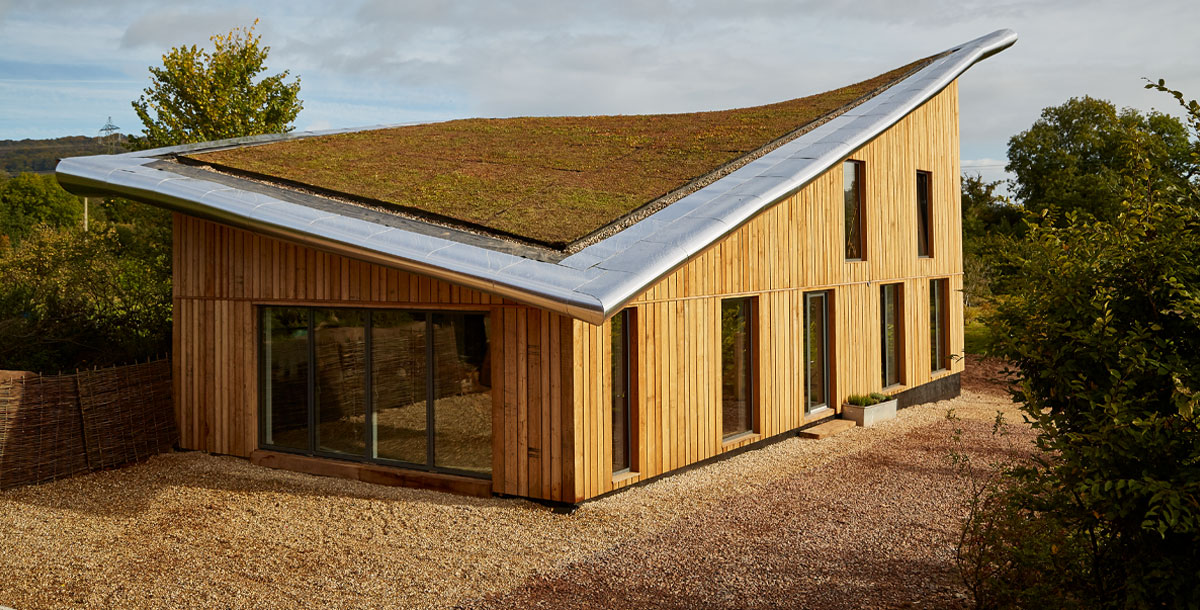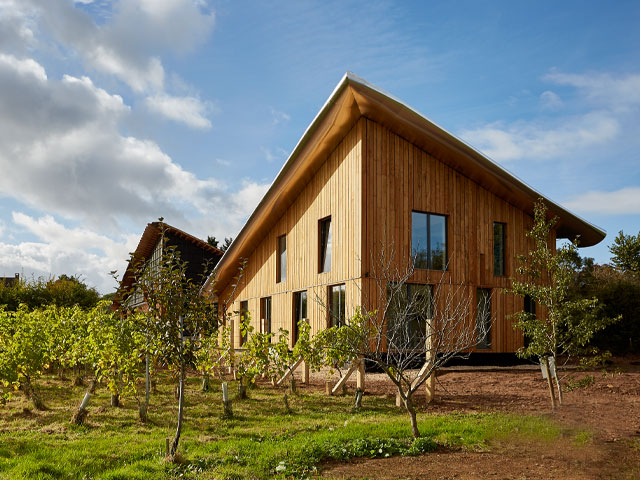‘Buildings can be part of the climate solution’
From heat pumps to insulation competitions, Kevin McCloud outlines his climate change policy
According to the World Green Building Council, buildings are responsible for almost 40% of global carbon emissions. That percentage breaks down as follows: around 11% is from construction and around 28% from the energy needed to heat, cool and power them. Bet you never thought that nearly a third of carbon emissions come from the fossil fuels spent in heating, cooling and lighting our buildings?
That 28% is a sobering figure because, for all that energy expended, there is nothing to see: no tangible result, no trade-off. For that percentage – which is a staggering 10 billion tonnes per year – we don’t get better medical care or improved flood defences. We don’t get a new bridge or investment in new solar-tidal energy technology or a million new eco-homes.
Ten billion tonnes of carbon emissions result from us wanting to be able to pad round our homes in T-shirts in winter and to avoid looking sweaty in summer.
COP26
No wonder our government wants us to buy heat pumps instead of gas boilers. Heat pumps use up to five times less energy and, since they run on electricity, can be powered by a wind farm in the North Sea.
Boris Johnson announced Britain’s ambitious plans for heat pumps and wind farms in October, just before the UN Climate Change Conference of the Parties (COP26) summit in Glasgow, although he did not announce extensive funding for either, hoping that industry will step forward to attract investment in wind farms and find enough efficiencies of manufacturing scale to bring down the price of heat pumps.
Tellingly and disappointingly, he also did not announce any plans for promoting behavioural change among his electorate. The official insights team has probably been too busy worrying about the impact of behavioural change policy on Tory voters’ allegiance to consider the content of the policy itself.
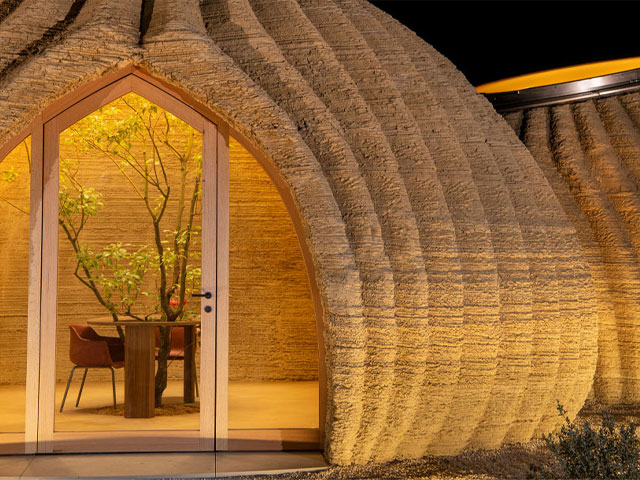
The 3D-printed Tecla house by Mario Cucinella Architects and Wasp, showcased at COP26’s Build Better Now pavilion, is made of reusable, recyclable materials.
Kevin McCloud’s climate change policy
The woolly jumper initiative
Since I have no allegiance, or any worry about having to get re-elected, I have a number of policies I would instigate immediately if I were prime minister, chief of which is the woolly jumper initiative. I suspect there are as many pullovers on the planet as there are human beings, so my first new climate law would be to make people wear them, together with long johns and thick woollen socks in winter. This would allow us to turn our thermostats down from 21° to 18°C.
Thermodynamics: an education
A second policy would be to educate everybody in the country about the principles of phase change and latent heat. All adults would have to read a 47-page booklet and learn the lyrics to comedy duo Flanders and Swann’s 1964 song ‘First and Second Law’ (of thermodynamics). This policy would have the advantage of training us to repair our own heat pumps, while also teaching us how to build our own air-conditioning systems with a bucket of water and an empty terracotta plant pot. Most impressively of all, it could slash carbon emissions with the revelation of a summer cooling technology that we can all harness for free: sweating.
Shared bedtime and snuggling
As Groucho Marx almost said, these are my policies; if you don’t like them, I have others. These include the banning of anti-perspirant (see above) and other initiatives such as a high-tog duvet policy; shared bedtime and snuggling, possibly with neighbours (to share body warmth); lukewarm hot drinks (which is both traditional and British); lukewarm ice-cold beer (also traditional and British); window shutters and heavy curtains (not currently fashionable, but to be made mandatory); and competitions for things such as the best-insulated home (along the lines of the best-dressed village). Details to be worked out.
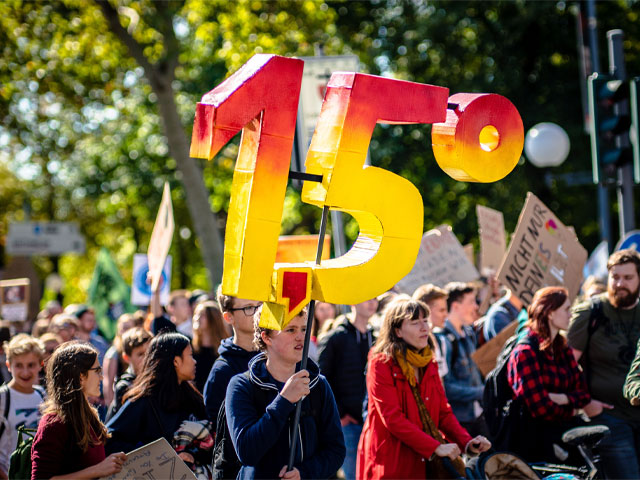
Temperature rises above 1.5°C will mean climate catastrophe. Photo: Mika Baumeister from Unsplash
Brave policies & government funding
It is going to need brave climate change policy and lots of government funding to drive change and to do it now. Labour says it would spend £10 billion over three years to kickstart the process. The Green Party has a properly integrated and sophisticated plan. It is also going to take ideas from all of us, some of them brilliant (wind farms, pullovers), others bonkers (lukewarm tea), to solve the biggest problem our civilisation has ever faced: how to reduce and even eliminate carbon emissions in order to keep global temperature rises to within 1.5°C of where they were in pre-industrial times. If we don’t, there will be a climate catastrophe.
The importance of 1.5°C
What exactly does that phrase mean? Well, according to the World Green Building Council, it means that, by 2050, 1.6 billion urban dwellers will be exposed to extreme high temperatures; more than 800 million people living in more than 570 cities will be vulnerable to rising sea levels and coastal flooding.
The Intergovernmental Panel on Climate Change (IPCC) says that, after a rise of 1.5°C, whole ecosystems will disappear. Also that the 1.5 figure is an average: around the globe, many places will experience far greater temperature rises. Above 1.5°C, we’ll see unstoppable processes of degradation, desertification and destruction of our planet.
So your ideas are important now more than ever, because it will be the collective ingenuity of humankind that gets us and our planet out of trouble. The irony is that many of the solutions are already in our world, even in our homes – in the insulation in our walls and the smart technology that is driving efficiencies in the ways we heat and light our buildings. There are now intelligent construction materials that are entirely recycled or which have new, low-carbon footprints or even absorb CO2.
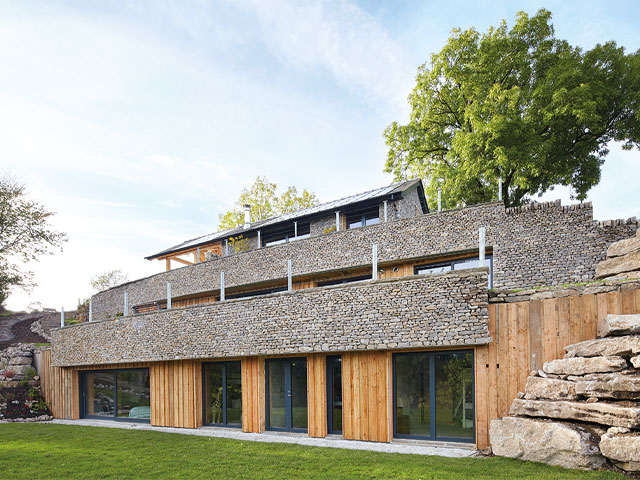
This Peak District home has solar power, heat-retaining concrete and highly-insulated shutters. Photo: Andrew Wall
Green Heroes
The Green Heroes feature at Grand Designs Live has been showcasing these types of ideas every year for 15 years now. The latest and perhaps most persuasive showcase is a virtual exhibition of inspirational projects from around the world. The Build Better Now pavilion is a collaboration for COP26 between the World Green Building Council, the UK Green Building Council and more than 40 partners. It is full of ideas and real- world solutions – some technological, some social, some architectural – that can help us all, homeowners, neighbours and governments alike, to work towards the 2050 legally binding target of net-zero emissions.
The built environment is not only part of the problem when it comes to the climate crisis, it’s part of the solution. And those solutions are around us here and now. It’s all within our grasp.

